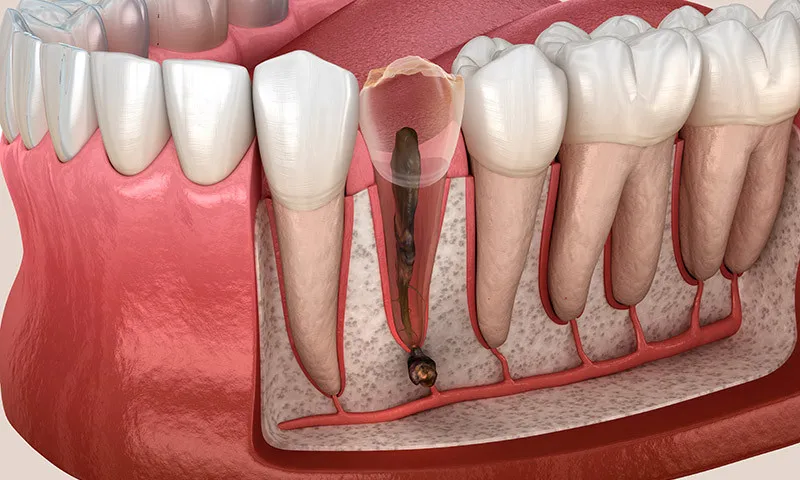Inflammation around nerves can lead to significant discomfort, and understanding why it causes so much pain is crucial for effective treatment and management. When nerves become inflamed, the body responds by increasing blood flow to the affected area, activating the immune system, and triggering the release of chemicals that promote healing. However, this process can also intensify pain, as swollen and irritated nerves become hypersensitive. The complex relationship between Nerve Filling with Inflammation and nerve pain is key to explaining the intense discomfort that often accompanies nerve-related conditions.
How Inflammation Affects Nerve Sensitivity?
Inflammation causes pain through several mechanisms that directly impact nerve sensitivity. When the body signals an injury or infection, inflammatory chemicals like prostaglandins and cytokines are released, which sensitize the nerves. The result is:
-
Increased pain receptors sensitivity: Inflammation activates pain receptors, causing nerves to respond more intensely to stimuli
-
Swelling around nerves: Pressure from the swelling puts additional stress on the nerves, amplifying pain
-
Chemical irritants: Inflammatory chemicals released during the immune response irritate nerve endings, leading to discomfort
These changes make even mild touch or movement feel painful, creating a heightened sensitivity that can persist until the inflammation is reduced.
The Role of Nerve Compression and Inflammation:
One of the main reasons inflammation causes so much pain is its effect on the surrounding tissue. As nerves become inflamed, they may be compressed or pinched by swollen tissues, leading to an increase in pain. This compression can occur in various ways:
-
Disc herniation or bulging discs: In the spine, an inflamed disc can press on surrounding nerves, leading to sharp, shooting pain (e.g., sciatica)
-
Tight muscles or fascia: Swelling around muscles can compress nerves, causing localized pain and discomfort
-
Carpal tunnel syndrome: Inflammation in the wrist compresses the median nerve, resulting in numbness, tingling, and pain in the hand
This pressure not only causes pain but can also restrict normal nerve function, leading to weakness or numbness in affected areas.
Chronic Inflammation and Neuropathic Pain:
When inflammation around nerves becomes chronic, it can result in long-term pain conditions. Chronic inflammation can alter the way nerves transmit signals, leading to neuropathic pain, a type of pain caused by damage to the nerves themselves. Key aspects of this include:
-
Persistent hypersensitivity: Chronic inflammation keeps nerves in a constant state of heightened sensitivity, resulting in ongoing pain
-
Altered nerve signaling: Inflammation can disrupt the normal electrical activity of nerves, causing abnormal pain signals to be sent to the brain
-
Damage to nerve tissue: Over time, prolonged inflammation can damage nerve fibers, leading to more severe and long-lasting pain
This type of pain is often described as burning, shooting, or tingling, and it can be challenging to treat without addressing the root cause of the inflammation.
Factors That Increase Inflammation and Pain:
Certain factors can exacerbate Nerve Filling with Inflammation Treatment around nerves, leading to more intense pain. These include:
-
Injury or trauma: Direct trauma to nerves can trigger an inflammatory response that intensifies pain
-
Chronic conditions: Diseases like diabetes, rheumatoid arthritis, or autoimmune disorders can lead to persistent nerve inflammation and pain
-
Infection: Infections that target nerve tissue, such as shingles, can cause painful inflammation that affects nerve function
-
Lifestyle factors: Poor posture, repetitive movements, and stress can contribute to nerve inflammation and pain, especially in areas like the back, neck, or wrists
Understanding these contributing factors is vital for managing and reducing inflammation-induced pain effectively.
Treatment Strategies to Manage Inflammation and Pain:
Managing the pain caused by inflammation around nerves requires a multifaceted approach. Common treatment options include:
-
Anti-inflammatory medications: NSAIDs or corticosteroids help reduce inflammation and alleviate pain
-
Pain relievers: Medications like gabapentin or amitriptyline can target nerve pain directly
-
Physical therapy: Helps reduce nerve compression, strengthen muscles, and improve mobility
-
Cold or heat therapy: Ice packs can reduce swelling, while heat helps relax muscles and promote blood flow
-
Lifestyle adjustments: Stress management, better posture, and avoiding repetitive activities can minimize inflammation
A combination of these treatments, tailored to the cause of the inflammation, can provide relief and help manage nerve pain over time.

